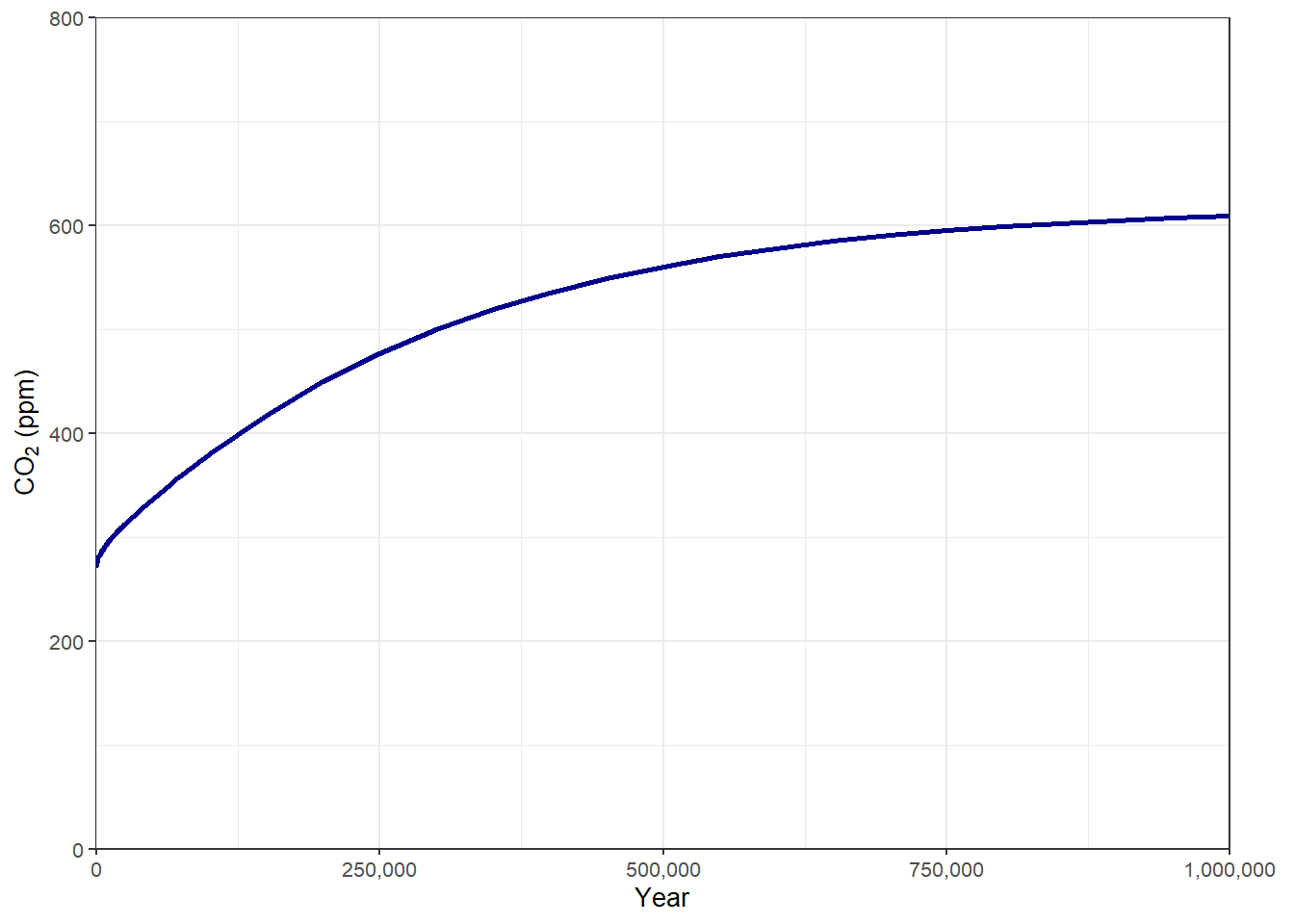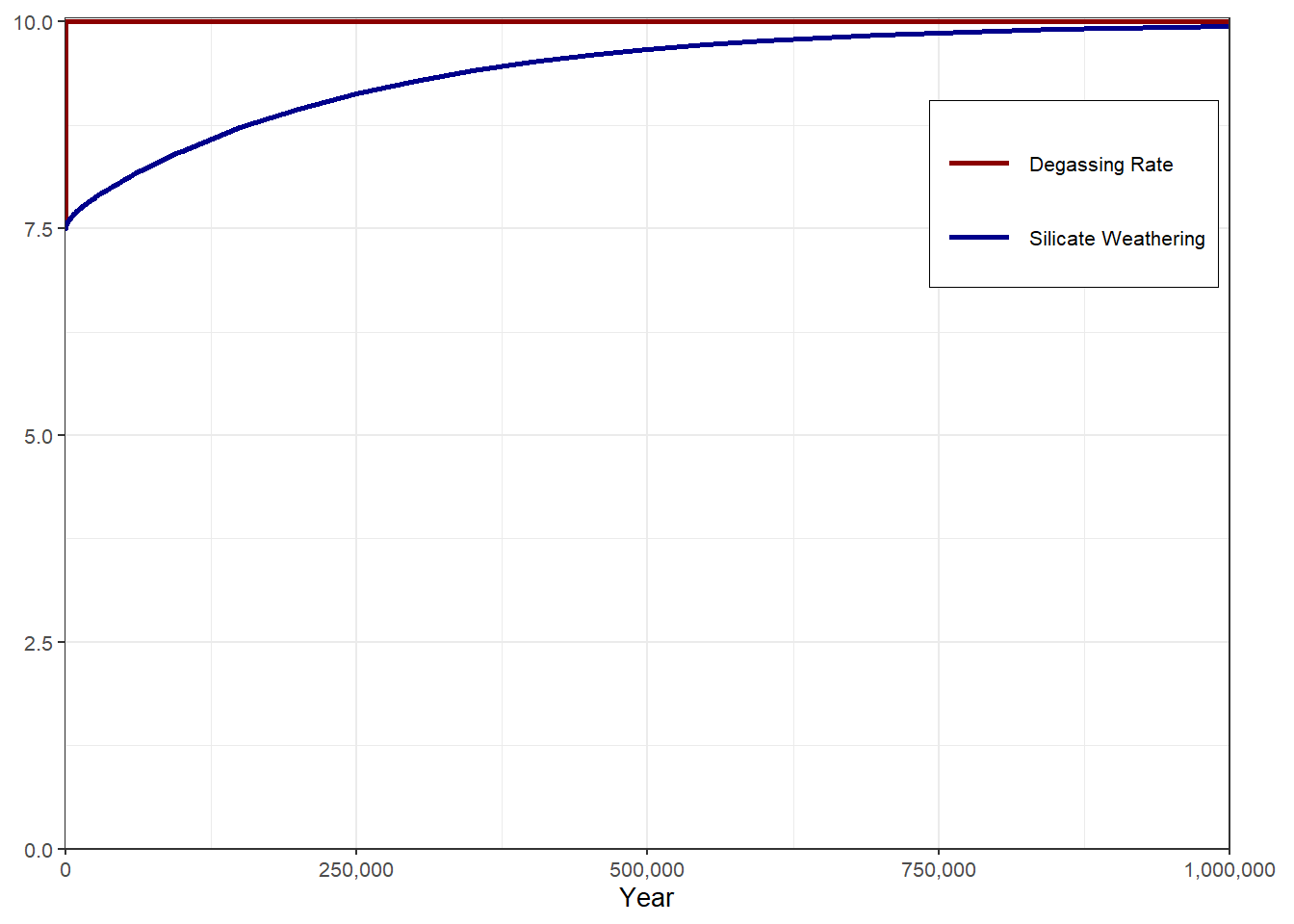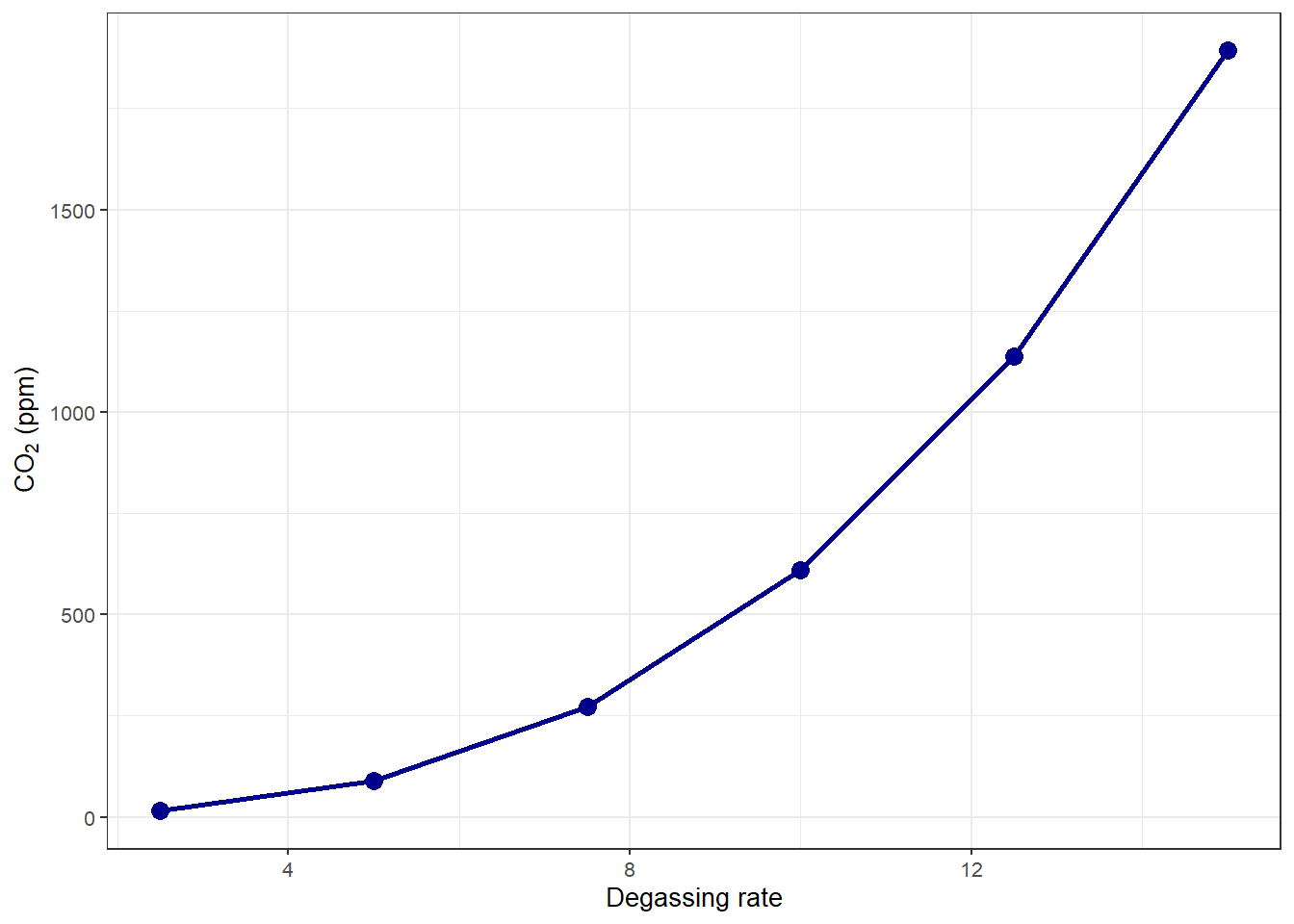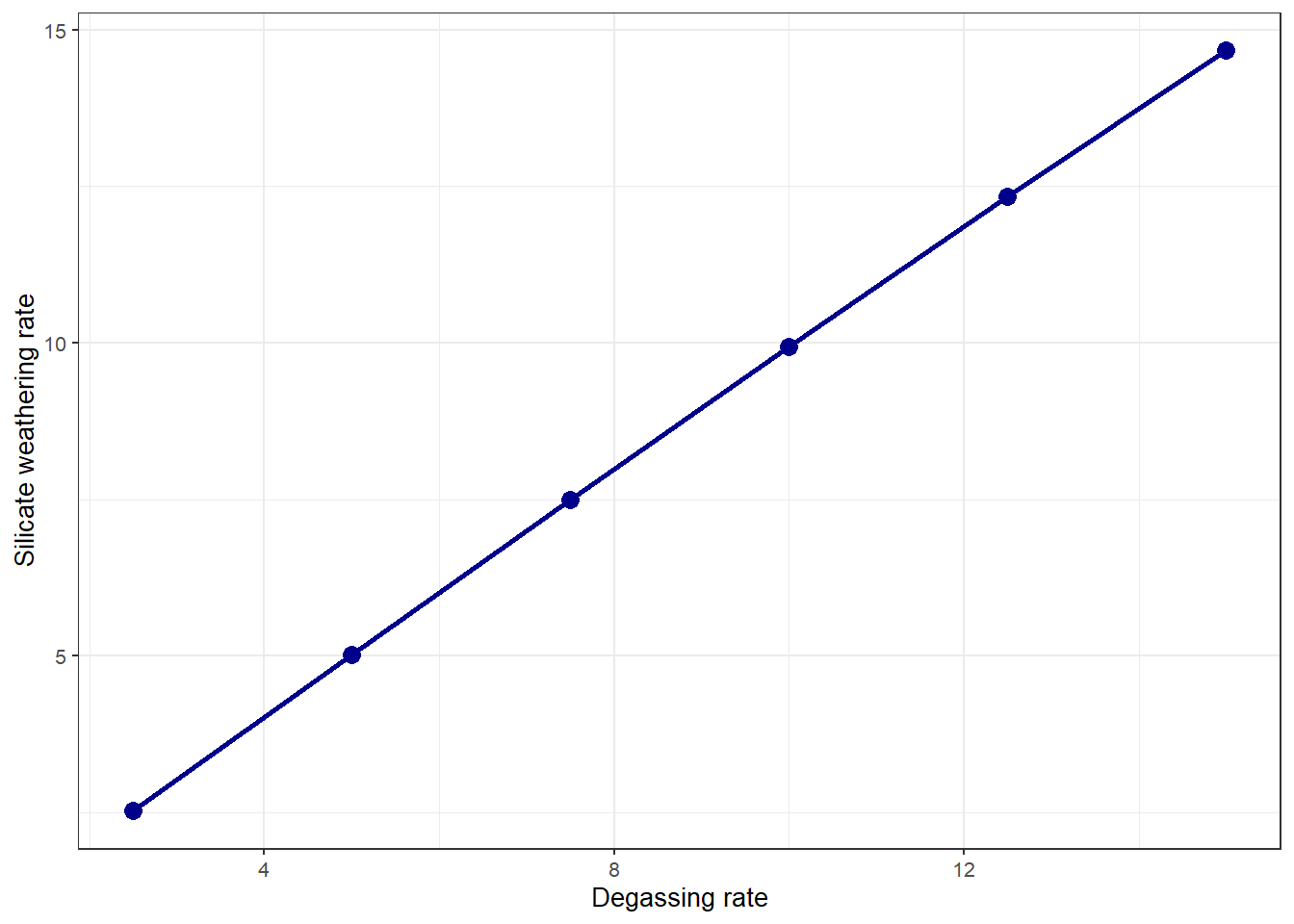Homework #5 Chapter 8 Homework Answers
PDF version
Chapter 8 Homework Answers
Exercise 8.1: Weathering
Weathering as a function of CO2. In steady state, the rate of weathering must balance the rate of CO2 degassing from the Earth, from volcanoes and deep sea vents. Run a simulation with a higher CO2 degassing rate at the transition time.
- Does an increase in CO2 degassing drive atmospheric CO2 up or down? How long does this take?
Answer to 8.1(a)
It takes about 1 million years for CO2 to come to equilibrium after the volcanic degassing rate changes.

- How can you see that the model balances weathering against CO2 degassing?
Answer to 8.1(b)
Look at the “Silicate Thermostat” graph: Watch how the weathering rate gradually rises until it meets the degassing rate.

- Repeat this run with a range of degassing rates, and make a table of the equilibrium CO2 concentration as a function of the CO2 degassing rate. The CO2 degassing rate is supposed to balance the CO2 consumption rate by silicate weathering.
Answer to 8.1(c)
| Degassing rate | CO2 |
|---|---|
| 2.5 | 15 |
| 5.0 | 90 |
| 7.5 | 273 |
| 10.0 | 609 |
| 12.5 | 1139 |
| 15.0 | 1893 |

- Make a plot of weathering as a function of atmospheric \(p \COO\) using your model runs.
Answer to 8.1(d)

Exercise 8.2: Weathering as a Feedback
Effect of solar intensity on steady state CO2 concentration. The rate of weathering is a function of CO2 and sunlight, a positive function of both variables. By this I mean that an increase in CO2 will drive an increase in weathering, as will an increase in sunlight. The sun used to be less intense than it is now. Turn back the clock 500 million years to when the sun was cooler than today. What do you get for the steady-state CO2, and how does this compare with what you get for today’s solar intensity? Explain why.
Answer to 8.2
Using today’s solar intensity, the CO2 concentration is 272.6 parts per million.
Using the solar intensity from 500 million years ago, we find a CO2 concentration of 2,372 parter per million, almost 10 times greater.
This is because, with less sunlight and the same CO2 concentration we have today, the temperature would be much lower. The reduced temperature would slow down weathering and with less weathering the CO2 would build up in the atmosphere and increase the temperature until the weathering matches the degassing rate.
